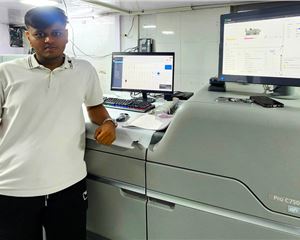Can small businesses make a positive difference?
The panel discussion, of the PHDCCI Global Summit, moderated by Deepak Manchanda of The Packaging Consortium, touched upon the challenges faced by the flexible packaging industry and the solutions to it from the brand’s perspective. The discussion also addressed how small brands and MSMEs could also take advantage of the solutions by working together on the solution.
25 May 2022 | By Aultrin Vijay
Deepak Manchanda (DM): What is the most significant challenge for the flexible packaging industry?
Barun Banerjee (BB): It would be developed and the changing regulations. We need to find the balance. Is it plastic mono-material or circular economy? What is the waste hierarchy which should be followed in the country? How can we adopt solutions without affecting supply so that we can scale up and deliver to the demand?
Himanshi Mahajan (HM): Advances in the material sciences have allowed the flexible packaging industry to create better materials for the food and beverage industry. But there are challenges. From a sustainability angle, segregation and recycling are the challenges that we are facing. Secondly, to introduce bio-based material into the packaging stream, the challenge is to ensure that the machinery can handle the recyclable and biodegradable materials. The new packaging design is the operational challenge, which we are facing. There are few areas where a multi-barrier or a complex structure is required from a food safety point of view. We are working on the solution – which will take some time – to introduce sustainable formats.
Amiya Pradhan (AP): First thing that a brand considers is how to sustain the brand. Without sustaining the brand at a commercial scale, we will not be able to commit to any such material, whether it is recyclable or PCR-based. The first challenge is cost. These structures cost too high that we cannot sustain that brand.
Sanjay Gupta (SG): We value packaging as the sixth pillar of marketing. It is the only industry that contributes to every single product produced in an economy. It is the world’s third-largest industry after food and energy. Packaging is the fifth largest sector in India’s GDP and is one of the highest growth sectors in the country. Plastic packaging has been playing a major role in economic growth and wellbeing. It has significantly helped address major global challenges. Overall, plastic packaging has a very strong value proposition, which is being challenged due to negative consequences. That mindset must be changed, whenever we say plastic is a negative product. The contradiction between challenges and opportunities for plastic packaging, we call it the “plastic paradox”. This needs to be changed by 7Rs – recycle, refuse, reduce, reuse, repair, regift and recover.
Jikul Purohit (JP): Some of your key strengths, at times, become some of your biggest weaknesses. For flexible packaging, its strength is barrier properties. Today, there are many complex barrier structures and industry needs to harmonise and zero in on a few structures. The second is lower thickness, which offers you less weight and low cost, but because of this there is a low value attached to the flexible packaging, and there is a challenge towards the end-of-life solution or affordability. Versatility, which was an advantage a few years back, has now become a complexity. Flexible packaging is still a fantastic material as far as the carbon footprint is concerned, but it also comes with its own end-of-life challenge, which we need to come together and find a solution.
DM: What is the most efficient approach to finding solutions to the challenges?
BB: We need a more standardised approach in the market, so no competition around material development. There should be a clear understanding that there is no secrecy in the development; it should benefit all players in the country so that it leads to similar solutions, which can be scalable so that it maintains the supply consistency and machine suppliers are able to make changes to the existing machines to run the latest materials. The package should protect the product, and retain shelf-life; the fundamentals of packaging should not be compromised. It should be a combined and holistic solution and should not be compromised with the change of materials.
A regulation framework has been released, which encourages food-grade recyclable materials. FSSAI has already drafted the regulation. And also, in the national EPR, from 2025-2026 onwards, there is a plan to use recycled materials in packaging. So, the direction is towards a circular economy. We should not be relying too much on the non-renewable side, which is key. So that virgin plastic usage gets reduced. Nestle is looking for a one-third reduction by 2025. The anti-litter campaign should gain strength.
HM: In food packaging, much of the food is left in the packaging material. We can educate the consumer to empty it to make it more viable for recycling. Much of the workaround plastic waste management rules are going on within the brands. So, we need to educate them in a simpler way by explaining what the struggles are and how we are collaborating on these initiatives. People can help by not littering, and segregating waste at the source. We are using QR codes and sensors for branding and to add fun value to the packaging. We can add information about recycling along with the QR code so that consumers can scan and learn how to segregate and be responsible.
AP: We have collaborated with many institutions to encourage responsible behaviour among consumers. We are also trying to install some stations in malls where consumers can refill their packs with oil or shampoo. Existing machines should be able to work on newer materials with minor upgrades, which will encourage brands to adopt newer and recyclable materials. We are also aligned to the government’s PCR goals.
SG: We are working to reduce the carbon footprint in our complete value chain right from packaging to manufacturing to logistics and construction. India looks towards Europe and the US for new technologies. We must invest a sizable pie in packaging R&D because it will be difficult for brands to be up to date. Technologies should be indigenised.
JP: Collaboration is key to working on the issue. Rather than competing, if we work together, then definitely there will be a solution. Every member in the supply chain has a role to address the issue, starting with waste segregation at the source. Once the effective collection is established, the problem will be reduced by 50%, because the waste can go to the recycling stream and either recovered or recycled. Globally the biggest challenge is manpower. India has huge manpower. The collection was an issue. But over a period, the government along with industries and NGOs have done a commendable job in urban areas, where most of the waste is segregated and sent to material recovery centres. Today, India is one of the best in PET recycling.
DM: How can the solutions be taken to smaller brands, MSMEs and the unorganised sector?
BB: Reimagining and redesigning packaging is key. We should be responsible for the packaging material quantity we are using. We should make the packs fit for purpose.With the recycled food-grade polymer encouragement the government is bringing in, every sector will benefit from it. These two approaches could be beneficial for MSMEs and smaller brands
HM: The first point is to optimise the packaging material we have. We need to look at the purpose and the performance needed by the packaging material and thereby we can reduce or remove some of the layers or additives that are not required. By doing so we also optimise costs. Secondly, many multi-layer plastics are used for its functionality. But we have seen products using multi-layer plastics (MLPs) for better machinability. There is a possibility to convert it to a better recycling monolayer structure, where MLP is not necessary. Reimaging packaging and tweaking structures
AP: I see a lot of opportunities for the MSMEs. All technologies should be indigenised so that MSMEs can capitalise on that, and cost benefits can be passed on to the users.
SG: India is a price-sensitive, mass populated country. We need to see packaging from a consumer point of view and not as a packaging technologist. On a larger scale, we need to invest in start-ups and encourage them because of the concept and technologies they can develop, which is difficult for larger players. Only thing we need to do is handholding, financing, advising and connecting them with larger players. This will also add value to the GDP of our country. As per the Global Innovation Index, India ranks 48 among 131 economies. In the last four years, India has produced many unicorns and start-ups. We should help this young team, which can help the whole industry.
JP: The future is probably moving from price-centric to price- and purpose-centric approach. Until now, for bigger and smaller brands, the thought process was based on compliance. We need to move to collaboration rather than only complying to government regulations.












 See All
See All